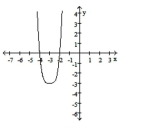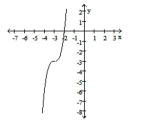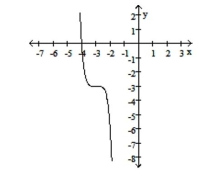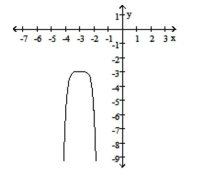Solve the problem.
-
a. Identify the power function of the form that is the parent function to the given graph.
b. In order, outline the transformations that would be required on the graph of to make the graph of the given function.
c. Match the function with the graph.
i.
ii.
iii.
iv.
A) a.
b. Shift to the left 3 units. Stretch vertically by a factor of 3 . Shift downward 3 units.
c. Graph iii.
B) a.
b. Shift to the left 3 units. Stretch vertically by a factor of 3 . Shift downward 3 units.
c. Graph ii.
C) a.
b. Shift to the left 3 units. Stretch vertically by a factor of 3 . Shift downward 3 units.
c. Graph i.
D) a.
b. Shift to the left 3 units. Shrink vertically by a factor of . Shift downward 3 units.
c. Graph iv.
Correct Answer:
Verified
Q94: Find the zeros of the function
Q95: Sketch the function. Q96: Sketch the function. Q97: Determine if the graph can represent Q98: Find the zeros of the function Unlock this Answer For Free Now! View this answer and more for free by performing one of the following actions Scan the QR code to install the App and get 2 free unlocks Unlock quizzes for free by uploading documents
-
-

